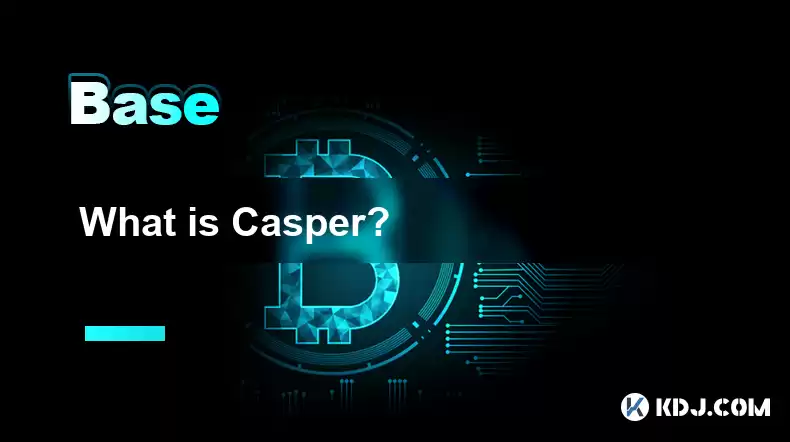-
 Bitcoin
Bitcoin $114200
0.00% -
 Ethereum
Ethereum $3637
0.56% -
 XRP
XRP $2.950
-2.01% -
 Tether USDt
Tether USDt $0.9999
0.02% -
 BNB
BNB $761.0
0.55% -
 Solana
Solana $164.1
-1.38% -
 USDC
USDC $0.9999
0.02% -
 TRON
TRON $0.3332
0.36% -
 Dogecoin
Dogecoin $0.2012
-0.52% -
 Cardano
Cardano $0.7261
-1.41% -
 Hyperliquid
Hyperliquid $37.62
-2.13% -
 Stellar
Stellar $0.3930
-2.65% -
 Sui
Sui $3.441
-0.16% -
 Bitcoin Cash
Bitcoin Cash $563.8
0.70% -
 Chainlink
Chainlink $16.50
0.09% -
 Hedera
Hedera $0.2424
-0.14% -
 Ethena USDe
Ethena USDe $1.001
0.01% -
 Avalanche
Avalanche $22.20
0.00% -
 Litecoin
Litecoin $118.0
-2.48% -
 UNUS SED LEO
UNUS SED LEO $8.991
0.12% -
 Toncoin
Toncoin $3.195
-3.87% -
 Shiba Inu
Shiba Inu $0.00001217
0.12% -
 Uniswap
Uniswap $9.674
-0.21% -
 Polkadot
Polkadot $3.633
1.00% -
 Monero
Monero $295.3
-0.82% -
 Dai
Dai $0.9999
0.00% -
 Bitget Token
Bitget Token $4.321
-0.41% -
 Cronos
Cronos $0.1392
0.73% -
 Pepe
Pepe $0.00001027
-0.89% -
 Aave
Aave $258.5
0.32%
What is Casper?
Casper FFG and Casper CBC are Ethereum's PoS consensus algorithms, with FFG being a hybrid system and CBC a pure PoS, both aimed at improving energy efficiency and security.
Apr 09, 2025 at 07:49 pm

Casper is a term that has been used in the cryptocurrency space to refer to two distinct projects: Casper the Friendly Finality Gadget (Casper FFG) and Casper CBC (Correct-by-Construction). Both are consensus algorithms designed to transition the Ethereum network from a Proof of Work (PoW) to a Proof of Stake (PoS) system. This article will delve into the details of both Casper FFG and Casper CBC, explaining their mechanisms, differences, and significance within the Ethereum ecosystem.
Casper the Friendly Finality Gadget (Casper FFG)
Casper FFG is a hybrid consensus mechanism that combines elements of both PoW and PoS. It was proposed by Ethereum co-founder Vitalik Buterin and researcher Virgil Griffith. The primary goal of Casper FFG is to provide a more energy-efficient and secure consensus mechanism for the Ethereum network.
In Casper FFG, validators are chosen based on the number of Ether (ETH) they are willing to "stake" as a security deposit. These validators are responsible for creating and validating blocks. The system operates in epochs, with each epoch consisting of a series of checkpoints. Validators vote on these checkpoints, and if a supermajority (typically 2/3) of validators agree on a checkpoint, it becomes finalized.
The finality of blocks in Casper FFG is a significant advantage over traditional PoW systems, where blocks can be reverted if a longer chain is found. In Casper FFG, once a checkpoint is finalized, it is considered irreversible, providing a higher level of security and reliability.
Casper CBC (Correct-by-Construction)
Casper CBC is another PoS consensus algorithm developed by Vlad Zamfir and his team. Unlike Casper FFG, Casper CBC is a fully PoS system and does not rely on PoW at all. The design of Casper CBC focuses on being "correct-by-construction," meaning that the protocol is designed to be secure and correct from the ground up.
In Casper CBC, validators also stake their ETH to participate in the consensus process. However, the validation process is more decentralized and less reliant on a centralized voting mechanism. Validators in Casper CBC make individual decisions based on the state of the blockchain, and the consensus emerges from the collective behavior of these validators.
One of the key features of Casper CBC is its use of a "slashing" mechanism, which penalizes validators who attempt to act maliciously. If a validator is found to be dishonest, a portion of their staked ETH can be slashed, providing a strong incentive for honest behavior.
Differences Between Casper FFG and Casper CBC
While both Casper FFG and Casper CBC aim to transition Ethereum to a PoS system, there are several key differences between the two:
- Hybrid vs. Pure PoS: Casper FFG is a hybrid system that still relies on PoW for block creation, whereas Casper CBC is a pure PoS system.
- Finality: Casper FFG provides explicit finality through a voting mechanism, while Casper CBC achieves finality through the collective behavior of validators.
- Complexity: Casper FFG is considered less complex and easier to implement, while Casper CBC is more complex but potentially more secure due to its "correct-by-construction" design.
Implementation and Current Status
The implementation of Casper FFG began with the Ethereum network's transition to Ethereum 2.0, which started with the Beacon Chain launch in December 2020. The Beacon Chain is a separate blockchain that runs parallel to the Ethereum mainnet and uses Casper FFG for its consensus mechanism.
As of the latest updates, the Ethereum network is in the process of merging the mainnet with the Beacon Chain, a process known as "The Merge." This merge will fully transition Ethereum to a PoS system using Casper FFG.
Casper CBC, on the other hand, is still in the research and development phase. While it has not been implemented on the Ethereum mainnet, it continues to be explored as a potential future upgrade to enhance the security and efficiency of the Ethereum network.
Significance of Casper in the Ethereum Ecosystem
The introduction of Casper, whether through FFG or CBC, represents a significant milestone in the evolution of the Ethereum network. By transitioning from PoW to PoS, Ethereum aims to address several critical issues:
- Energy Efficiency: PoS is significantly more energy-efficient than PoW, reducing the environmental impact of the Ethereum network.
- Security: PoS provides a more secure consensus mechanism by incentivizing honest behavior through staking and slashing mechanisms.
- Scalability: The transition to PoS is expected to improve the scalability of the Ethereum network, allowing for faster and more efficient transaction processing.
The adoption of Casper also aligns with the broader trend in the cryptocurrency space towards more sustainable and efficient consensus mechanisms. As other blockchain networks explore similar transitions, the success of Casper on Ethereum could serve as a model for the industry.
Frequently Asked Questions
Q: How does Casper FFG ensure the security of the Ethereum network?
A: Casper FFG ensures the security of the Ethereum network through a combination of staking and a voting mechanism for finality. Validators stake their ETH, which serves as a security deposit. If they act maliciously, they risk losing their stake. The voting mechanism ensures that a supermajority of validators must agree on a checkpoint for it to be finalized, making it extremely difficult for malicious actors to compromise the network.
Q: What are the potential risks associated with Casper CBC?
A: One of the potential risks associated with Casper CBC is its complexity. The "correct-by-construction" design, while theoretically more secure, is more challenging to implement and verify. Additionally, the decentralized nature of validator decision-making could lead to slower consensus formation in certain scenarios, potentially affecting the network's performance.
Q: How does the transition to Casper affect Ethereum's transaction fees?
A: The transition to Casper, particularly through the implementation of Ethereum 2.0, is expected to improve the scalability of the network. This improvement could lead to lower transaction fees as the network becomes more efficient at processing transactions. However, the exact impact on fees will depend on various factors, including network usage and the implementation details of the Casper consensus mechanism.
Q: Can users participate in Casper without running a full node?
A: Yes, users can participate in Casper without running a full node by delegating their stake to a validator. This process, known as staking-as-a-service, allows users to earn rewards from the PoS system without the need to manage the technical aspects of running a validator node. Several platforms and services have emerged to facilitate this type of participation in the Ethereum network.
Disclaimer:info@kdj.com
The information provided is not trading advice. kdj.com does not assume any responsibility for any investments made based on the information provided in this article. Cryptocurrencies are highly volatile and it is highly recommended that you invest with caution after thorough research!
If you believe that the content used on this website infringes your copyright, please contact us immediately (info@kdj.com) and we will delete it promptly.
- EIP-7999: Ethereum's Fee Fixer-Upper – Is This the End of Gas Fee Nightmares?
- 2025-08-06 15:10:22
- Ethereum Withdrawals, Institutional Confidence, and a Potential Price Rally: Decoding the Signals
- 2025-08-06 15:30:12
- Ethereum Reform: EIP-7999 and the Quest for Fee-less Crypto?
- 2025-08-06 15:30:12
- XRP, MAGACOIN FINANCE, and Ethereum: What's Hot in the Crypto World?
- 2025-08-06 15:35:12
- Unilabs, Ethereum, and Dogecoin: Navigating the Crypto Landscape
- 2025-08-06 15:35:12
- ETH, BTC, XRP: Navigating Crypto Volatility and Spotting the Next Big Thing
- 2025-08-06 15:40:11
Related knowledge

What is the difference between CeFi and DeFi?
Jul 22,2025 at 12:28am
Understanding CeFi and DeFiIn the world of cryptocurrency, CeFi (Centralized Finance) and DeFi (Decentralized Finance) represent two distinct financia...

How to qualify for potential crypto airdrops?
Jul 23,2025 at 06:49am
Understanding What Crypto Airdrops AreCrypto airdrops refer to the distribution of free tokens or coins to a large number of wallet addresses, often u...

What is a crypto "airdrop farmer"?
Jul 24,2025 at 10:22pm
Understanding the Role of a Crypto 'Airdrop Farmer'A crypto 'airdrop farmer' refers to an individual who actively participates in cryptocurrency airdr...

What is the difference between a sidechain and a Layer 2?
Jul 20,2025 at 11:35pm
Understanding the Concept of SidechainsA sidechain is a separate blockchain that runs parallel to the main blockchain, typically the mainnet of a cryp...

What is the Inter-Blockchain Communication Protocol (IBC)?
Jul 19,2025 at 10:43am
Understanding the Inter-Blockchain Communication Protocol (IBC)The Inter-Blockchain Communication Protocol (IBC) is a cross-chain communication protoc...

How does sharding improve scalability?
Jul 20,2025 at 01:21am
Understanding Sharding in BlockchainSharding is a database partitioning technique that is increasingly being adopted in blockchain technology to enhan...

What is the difference between CeFi and DeFi?
Jul 22,2025 at 12:28am
Understanding CeFi and DeFiIn the world of cryptocurrency, CeFi (Centralized Finance) and DeFi (Decentralized Finance) represent two distinct financia...

How to qualify for potential crypto airdrops?
Jul 23,2025 at 06:49am
Understanding What Crypto Airdrops AreCrypto airdrops refer to the distribution of free tokens or coins to a large number of wallet addresses, often u...

What is a crypto "airdrop farmer"?
Jul 24,2025 at 10:22pm
Understanding the Role of a Crypto 'Airdrop Farmer'A crypto 'airdrop farmer' refers to an individual who actively participates in cryptocurrency airdr...

What is the difference between a sidechain and a Layer 2?
Jul 20,2025 at 11:35pm
Understanding the Concept of SidechainsA sidechain is a separate blockchain that runs parallel to the main blockchain, typically the mainnet of a cryp...

What is the Inter-Blockchain Communication Protocol (IBC)?
Jul 19,2025 at 10:43am
Understanding the Inter-Blockchain Communication Protocol (IBC)The Inter-Blockchain Communication Protocol (IBC) is a cross-chain communication protoc...

How does sharding improve scalability?
Jul 20,2025 at 01:21am
Understanding Sharding in BlockchainSharding is a database partitioning technique that is increasingly being adopted in blockchain technology to enhan...
See all articles

























































































